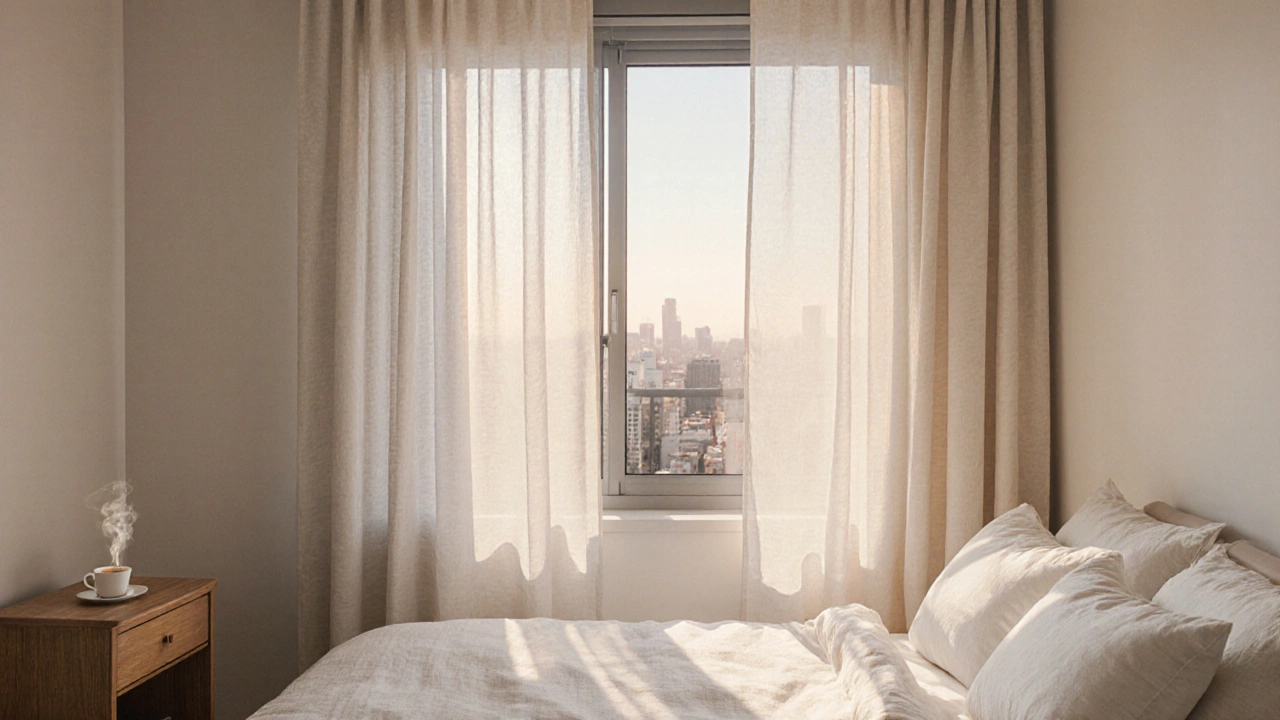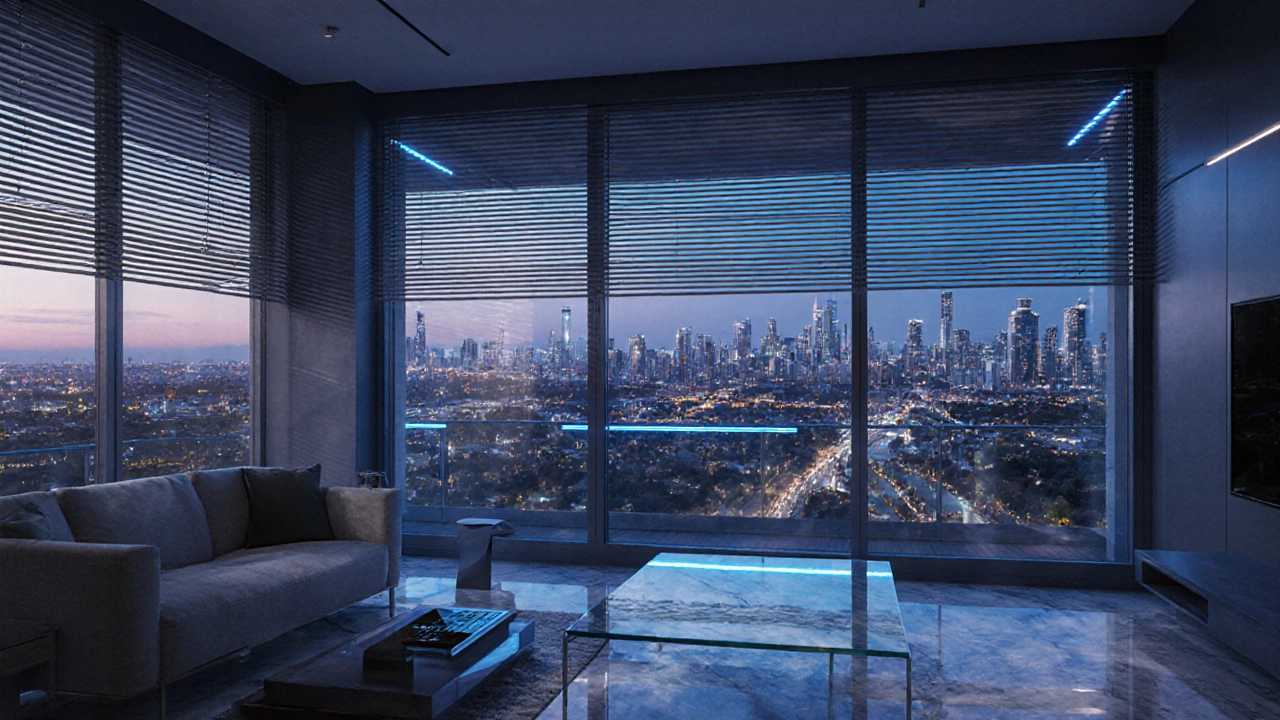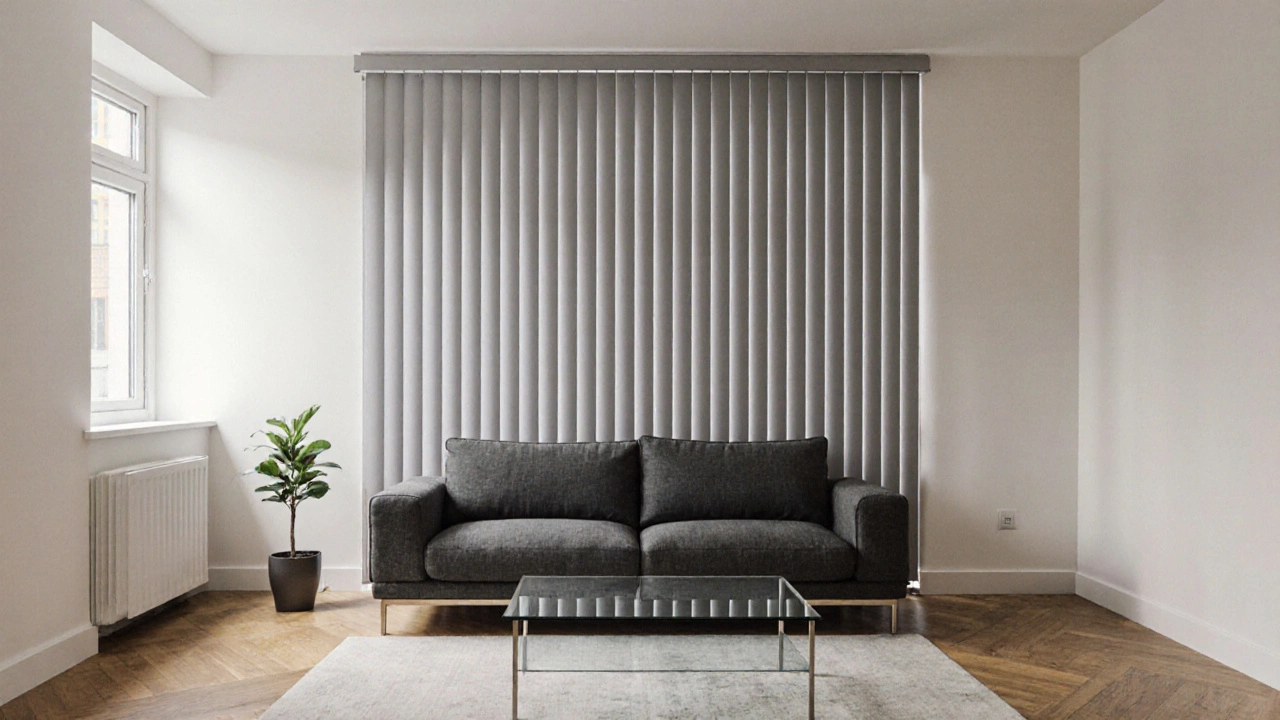Blind Type Selector
Find your perfect blind type based on your room needs, style preferences, and sustainability goals.
Take a 1-minute quiz to find your ideal blind type
Answer these quick questions to get personalized recommendations for your space.
Your Recommendation
When it comes to blinds are a type of window covering that can be adjusted to control light and privacy, the question of style is always evolving. 2024 has brought a flood of new colour palettes, tech‑savvy options, and sustainability concerns that make many homeowners wonder: are blinds still a good choice, or have they been eclipsed by other window treatments?
Key Takeaways
- Blinds remain popular in minimalist interiors but lose favour in bold‑colour rooms.
- Smart and sustainable blind options are the fastest‑growing segment in 2024.
- Mixing blinds with sheer curtains offers the best light control and style flexibility.
- When choosing, consider room function, colour palette, and maintenance needs.
- Melbourne homeowners are leaning toward natural materials and neutral tones.
Why window treatments are a 2024 design focal point
Design editors from Elle Décor and Architectural Digest agree that the way a window is dressed determines the room’s mood more than any piece of furniture. In 2024, three forces are shaping the conversation:
- Health & wellbeing: Natural light is linked to better sleep and mood, so people want precise control without sacrificing view.
- Technology: Motorised systems can be synced with smart‑home hubs, letting you lower blinds at sunset automatically.
- Eco‑consciousness: Recycled fabrics and low‑VOC finishes are now a purchasing requirement for 45% of Australian buyers, according to a 2024 HomeStyle survey.
Because window treatments sit at the intersection of aesthetics, function, and sustainability, they naturally become the litmus test for what’s ‘in’ this year.
Current 2024 Trends: From Minimalist to Bold
The design world in 2024 is split between two camps. On one side, the minimalist interiors favour clean lines, neutral palettes, and understated hardware. On the other side, the color‑blocking movement embraces bright primary shades, geometric prints, and layered textures.
In minimalist spaces, flat‑panel vertical blinds in matte aluminium or bamboo are the go‑to because they blend into the wall without demanding attention. In contrast, a colour‑blocking living room often pairs a bold, patterned curtain with a simple blackout blind for night‑time privacy.
Survey data from the Australian Design Council (2024) shows that 62% of homeowners who chose vertical blinds did so specifically for a sleek, modern look, while 48% of those who opted for patterned curtains did so to create a visual focal point.
Types of blinds
Not all blinds are created equal. Below is a quick comparison of the most common styles you’ll see in showrooms and online stores.
| Blind Type | Material | Light Control | Style Fit | Eco Rating |
|---|---|---|---|---|
| Vertical blinds | Aluminium or bamboo | Fine‑tuned (tilt + full lift) | Minimalist, contemporary | Medium (recyclable metal, sustainable bamboo) |
| Roman shades | Fabric (cotton, linen, recycled polyester) | Soft diffusion, partial blackout | Traditional, cozy | High (organic fabrics, low VOC dyes) |
| Smart blinds | Motorised aluminium or composite | Full automation, programmable scenes | Modern tech‑savvy | Varies (depends on material choice) |
| Roller blinds | Vinyl, blackout fabric | Complete block, simple lift | Casual, functional | Low (plastic based) |
Each style has a sweet spot. If you love the clean look of vertical blinds but need blackout at night, pair them with a sheer layer (see next section).

Mix‑and‑Match: Blinds + sheer curtains
Combining blinds with sheer curtains is the “best of both worlds” solution gaining momentum in 2024. The sheer layer lets daylight filter in while preserving privacy, and the blind provides total blackout when required. This duo works especially well in Melbourne apartments where you want sunshine in the morning but need privacy in the evening.
Design tip: Choose a sheer in a neutral tone (e.g., ivory or light grey) and match the blind colour to the wall for a seamless look. If you’re daring, go for a contrasting colour-think navy blinds behind pale ivory sheers-to add depth without overwhelming the space.
Alternatives: When Blinds Might Not Be the Best Fit
Even though blinds are versatile, a few scenarios call for other solutions:
- Large floor‑to‑ceiling windows: Heavy fabric curtains provide a softer drape and can be anchored with decorative tie‑backs.
- High‑humidity areas (bathrooms, kitchens): Moisture‑resistant roller blinds or PVC panels are easier to clean than fabric.
- Kids’ rooms: Cord‑free Roman shades with magnetic closures avoid safety hazards.
- Tech‑heavy homes: smart blinds integrated with Alexa or Google Home let you automate scenes (e.g., “movie mode”).
How to Choose the Right Blind for Your Space
Use this quick checklist before you head to the showroom:
- Room purpose: Living rooms need flexibility; bedrooms often demand blackout.
- Light exposure: South‑facing rooms benefit from sheer + blind combos; north‑facing may need full blackout.
- Style language: Minimalist interiors pair best with vertical blinds or flat‑panel roller blinds. Colour‑blocking spaces can tolerate bold prints on curtains and keep blinds simple.
- Material sustainability: Look for sustainable fabrics like organic cotton or recycled polyester.
- Budget & maintenance: Motorised smart blinds cost 2-3x more than manual options but save energy via automated shading.
Tick each box, and you’ll end up with a solution that feels intentional rather than an after‑thought.

Real‑World Examples from Melbourne Homes
To prove the theory, here are three recent projects I followed in the local design scene:
- St Kilda apartment: Owner chose matte aluminium vertical blinds in a soft dove grey, layered with off‑white sheer curtains. Result-bright mornings, complete privacy after 9pm, and a look that matches the building’s contemporary façade.
- Fitzroy townhouse: A family wanted a warm, lived‑in feel. They installed Roman shades in a hand‑loomed linen fabric, paired with a single statement curtain in an earthy terracotta. The linen’s high sustainable fabrics rating satisfied their eco‑values.
- South Yarra penthouse: Tech‑enthusiast opted for smart blinds that sync with the home’s sunrise alarm. When the blinds close at night, they also trigger the LED strip lights, creating a seamless “sleep mode”.
All three projects demonstrate that blinds are far from dead-they’re simply getting smarter and more context‑aware.
Maintenance Tips & Sustainability Hacks
Even the most stylish blind can lose its charm if neglected. Keep these pointers in mind:
- Dust regularly: A microfiber cloth or a low‑speed vacuum attachment prevents buildup that can scar the slats.
- Spot‑clean fabric blinds with a gentle soap solution; avoid harsh chemicals that break down recycled fibres.
- Lubricate motorised tracks once a year to ensure smooth operation.
- Recycle old blinds through local scrap metal recyclers (for aluminium) or textile reuse programs (for fabric).
Choosing sustainable fabrics not only reduces environmental impact but also tends to be more durable, meaning fewer replacements over time.
Frequently Asked Questions
Are blinds still a good choice for a modern living room?
Yes. In 2024, sleek vertical blinds or flat‑panel roller blinds complement a modern aesthetic while offering precise light control. Pair them with sheer curtains for added softness.
What’s the difference between vertical blinds and Roman shades?
Vertical blinds consist of hanging slats that tilt and stack to the side, ideal for large windows. Roman shades are fabric panels that fold into neat pleats when raised, providing a softer, more traditional look.
Can I automate my existing blinds?
Many manufacturers offer retrofit kits that add motorised cords to manual blinds, turning them into smart blinds. Check compatibility with your current hardware before buying.
How do I choose eco‑friendly blinds?
Look for products made from recycled aluminium, sustainably sourced bamboo, or organic cotton/linen fabrics. Certifications such as Cradle‑to‑Cradle or GOTS are reliable indicators.
Is it worth paying extra for motorised blinds?
If you value convenience, energy savings (by automating shading), or have hard‑to‑reach windows, the investment can pay off over time. For a single room, manual blinds may be more cost‑effective.


